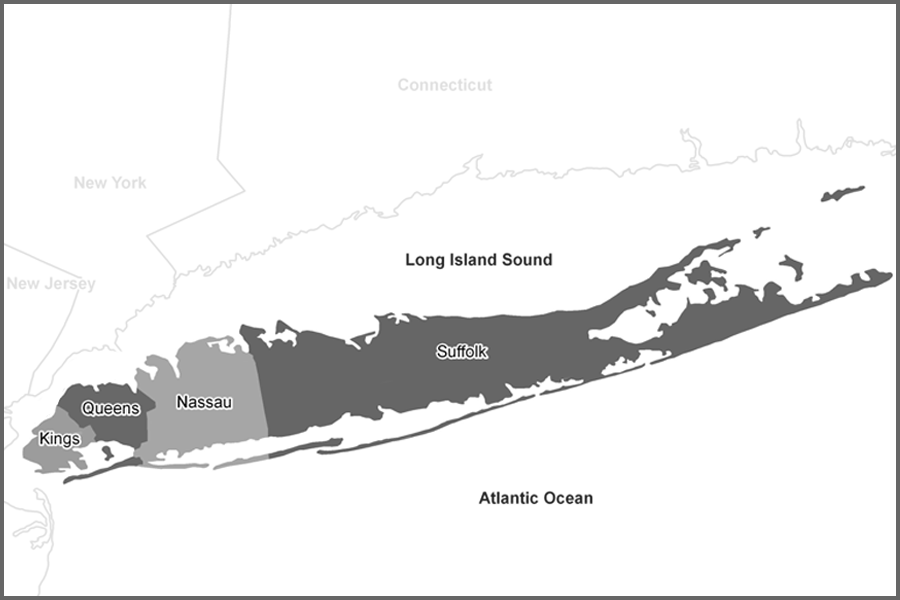A Tale of Four Counties

Long Island is divided into four counties: Nassau, Suffolk, Brooklyn (Kings), and Queens. The island’s westernmost counties, Brooklyn and Queens, are part of the expansive boroughs that make up New York City. On the other hand, Nassau and Suffolk counties cover the majority of the island’s landmass, featuring a mix of suburban communities, scenic coastlines, and vibrant cultural hubs.
Brooklyn, one of the five boroughs of New York City, is situated on the western tip of Long Island. Known for its distinct neighborhoods, cultural diversity, and iconic landmarks such as the Brooklyn Bridge, Brooklyn brings an urban flair to Long Island. The borough is a bustling metropolis with a thriving arts scene, world-class dining, and a rich history that adds a metropolitan dimension to the island’s overall character.
Queens, another borough of New York City, lies to the east of Brooklyn on western Long Island. Queens is renowned for its cultural mosaic, reflecting a blend of ethnicities and communities. Home to Flushing Meadows-Corona Park, the site of the 1964 World’s Fair, Queens offers a mix of green spaces, cultural institutions, and a diverse culinary scene. The presence of Queens College and St. John’s University adds an academic element to the island’s western regions.
As one of the two counties exclusive to Long Island, Nassau County is characterized by its suburban landscapes and affluent communities. Located to the east of Queens, Nassau County is known for its well-manicured neighborhoods, upscale shopping destinations, and proximity to New York City. The county’s economy is diverse, with a focus on finance, healthcare, and technology.
Suffolk County, the largest of Long Island’s counties, encompasses the easternmost portion of the island. Stretching from the North Shore to the South Shore, Suffolk County boasts a varied geography, including beaches, parks, and farmland. The Hamptons and North Fork, within Suffolk County, are renowned for their picturesque landscapes, wineries, and a relaxed lifestyle. Suffolk’s economy reflects its diverse industries, including agriculture, tourism, and research.
The presence of two New York City boroughs on Long Island creates a unique dynamic in terms of transportation and interconnectedness. The Long Island Rail Road (LIRR) serves as a vital link, connecting the island to Manhattan and facilitating the movement of residents and visitors between the suburban and urban landscapes. Highways and bridges further enhance the accessibility of Long Island, fostering a sense of unity despite the administrative distinctions between counties.
Long Island, with its four distinct counties, stands as a testament to the intricate interplay of urban and suburban life. While Brooklyn and Queens contribute to the vibrant tapestry of New York City, Nassau and Suffolk counties bring their own charm, offering a diverse range of experiences from upscale suburbs to serene coastal retreats. This unique amalgamation defines Long Island’s identity, making it a region of contrasts and harmony simultaneously.

